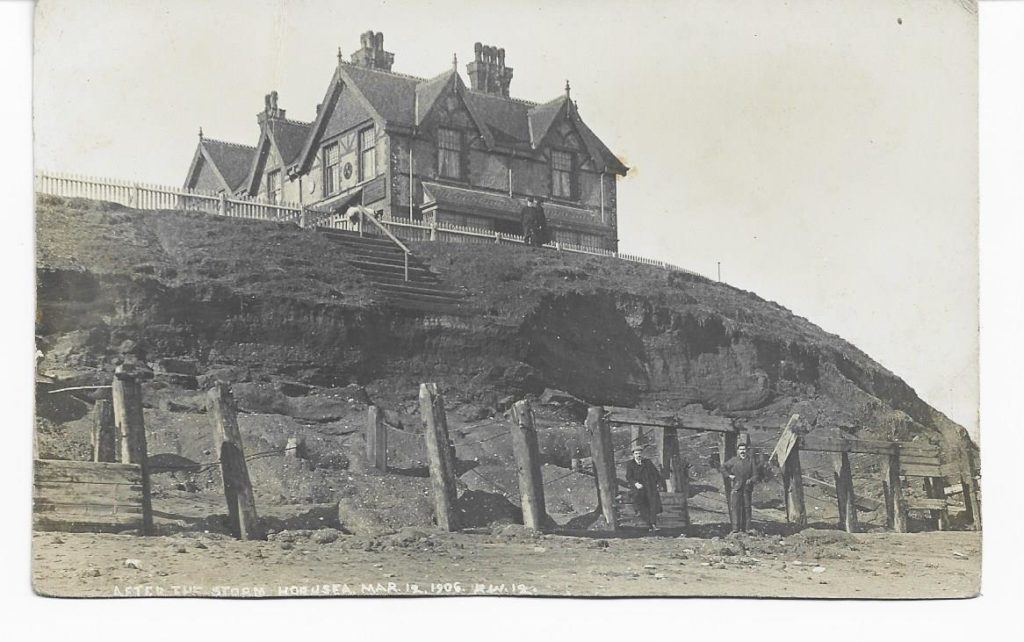
This early photo, said to date from March 1906 shows a section of Hornsea front after a severe storm. The vertical timbers appear to be the remnants of a wooden plank sea defence, clearly breached by the storm. It is an example of the way coastal erosion takes place along the Holderness coast comprised of unconsolidated boulder clay; the erosive force of extremely high tides undercuts the cliff face and, sooner or later the overhanging soil above will slump down, and then gradually swept south by the process of longshore drift to later be deposited along the Lincolnshire coast, in the Wash or swept back and forth by the daily tides in the Humber Estuary. The precariously positioned building in the photo is the Marine Hotel (surviving). Clearly substantial flood defences must have been put in place soon after this photo was taken, these added to by the more substantial sea defences seen today. I’m sure there is an information plaque about Hornsea’s concrete promenade as seen today but I cannot remember details.
It follows from recent writings here that with the ebb and flow of ice ages over the last few million years that there will have been a succession of Doggerlands and German Oceans prior to the ones studied today; although their relative extents will have varied each time. The boulder clays of Holderness must be, presumably, be made up of soil and rocks bulldozed up by advancing glaziers, particularly those crossing Doggerland from Scandinavia. Yes, it is easy on Hornsea beach to find pebbles of rock which originated from Scandinavian mountains but there would have been little soil from those steep granite slopes. This is why occasionally artifacts such as portions of mammoth’s tusks are revealed in the Holderness cliff face, as these animals would have roamed across Doggerland ahead of the later Ice Age.
Also, one might wonder how the present coastline north of Holderness, particularly Flamborough Head, continued into Doggerland before the last glaciation. There will, I am sure be a geological map of the North Sea bed but I don’t know of it. The relationship between the chalk escarpment east of the present cliff-line and Dogger Bank could be one such question.
So to stand on the cliff top at Thornwick Bay, which I try to do as often as possible, look east and wonder what that part of the north-German plain once looked like is an exercise in reasoned imagination.